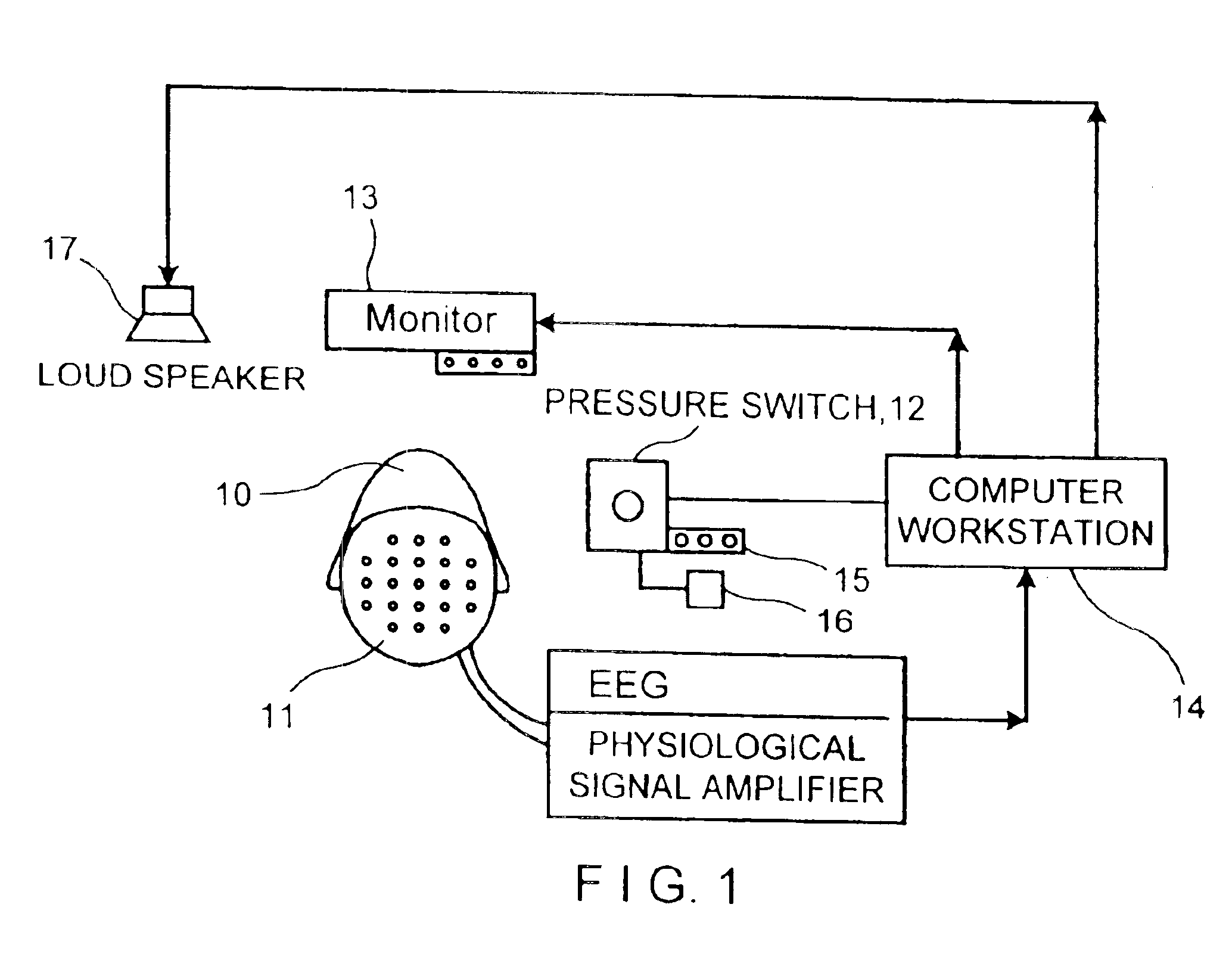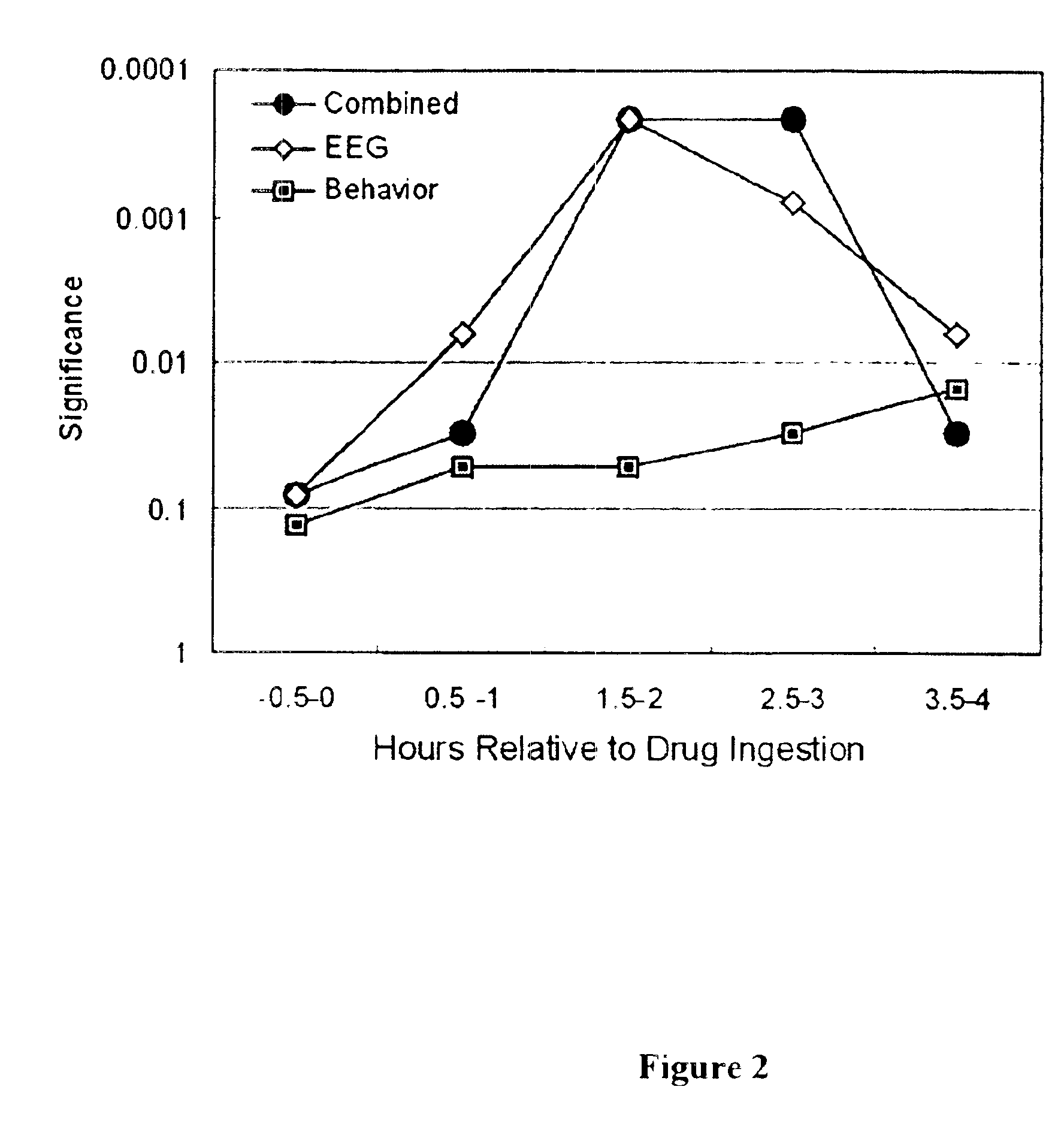Neurocognitive function EEG measurement method and system
a neurocognitive function and measurement method technology, applied in the field of neuropsychological, neurophysiological, and neuropsychological tests for measuring mental function, can solve the problems of insufficient sensitivity to measure relatively subtle changes in neurocognitive functioning of individuals over time, methods only use single measurements of brain function that alone are insufficient to adequately, and prior methods do not consider both brain function and its resultant behavioral performan
- Summary
- Abstract
- Description
- Claims
- Application Information
AI Technical Summary
Benefits of technology
Problems solved by technology
Method used
Image
Examples
experiment i
METHOD AND RESULTS OF EXPERIMENT I
Tracking the Cognitive Pharmacodynamics of Psychoactive Substances with Combinations of Behavioral and Neurophysiological Measures
[0103]Abstract: Many common pharmacological treatments have effects on cognitive ability. Psychometric task batteries used to characterize such effects do not provide direct information about treatment-related changes in brain function. Since overt task performance reflects motivation and effort as well as ability, behavioral measures alone may over- or under-estimate the impact of a pharmacological intervention on brain function. Here we present a method that combines behavioral and neurophysiological measures in order to detect the psychoactive effects of pharmacological treatments with greater sensitivity than that provided by behavioral measures alone. Initial application of the method is made to the data from a double blind, placebo-controlled, crossover study in which caffeine, diphenhydramine, and alcohol were used...
experiment 2
METHOD AND RESULTS OF EXPERIMENT 2
Hybrid Expert-Rule & Neural Network Method that Combines Three Classes of Measures to Detect Changes in Neurocognitive Function
[0143]In addition to plain neural network and linear statistical approaches (as in Experiment 1), we have developed a new improved method to detect cognitive impairment that combines rule-based decision algorithms and neural networks. In this hybrid approach, multiple if-then rules gleaned from expert knowledge are applied to data to produce many low-level decisions about the direction of a change between two states. These local decisions are made with respect to single data parameters and the output of these rule-based functions serve as the inputs to a combinatorial network that in turn produces a single summary index of the direction and magnitude of change of neurocognitive function from a baseline state to a test state. As with a knowledgeable human expert assessing an ambiguous problem, decisions about the direction an...
experiment 3
METHOD AND RESULTS OF EXPERIMENT 3
Assessing Neurocognitive Effects of Sleep Deprivation
[0146]Background: A large number of experiments demonstrate that sleep loss can have an adverse impact on behavioral tests. For example, experiments with military personnel indicate that overall cognitive ability may decline by 30% following one night of simulated sustained operations without sleep, and by more than 50% following a second such sleepless night. The problem of fatigue-related performance impairment is not limited to individuals working in military environments. Anyone experiencing excessive sleepiness during normal waking hours may perform rote activities adequately, yet may be error-prone in unexpected situations that tax attentional capacity. As a result, fatigue is frequently implicated in major workplace accidents. For example, it has been cited as a probable contributing factor in the crash of the Exxon Valdez oil tanker in Alaska, as well as in the catastrophes at the Three Mi...
PUM
 Login to View More
Login to View More Abstract
Description
Claims
Application Information
 Login to View More
Login to View More - R&D
- Intellectual Property
- Life Sciences
- Materials
- Tech Scout
- Unparalleled Data Quality
- Higher Quality Content
- 60% Fewer Hallucinations
Browse by: Latest US Patents, China's latest patents, Technical Efficacy Thesaurus, Application Domain, Technology Topic, Popular Technical Reports.
© 2025 PatSnap. All rights reserved.Legal|Privacy policy|Modern Slavery Act Transparency Statement|Sitemap|About US| Contact US: help@patsnap.com



